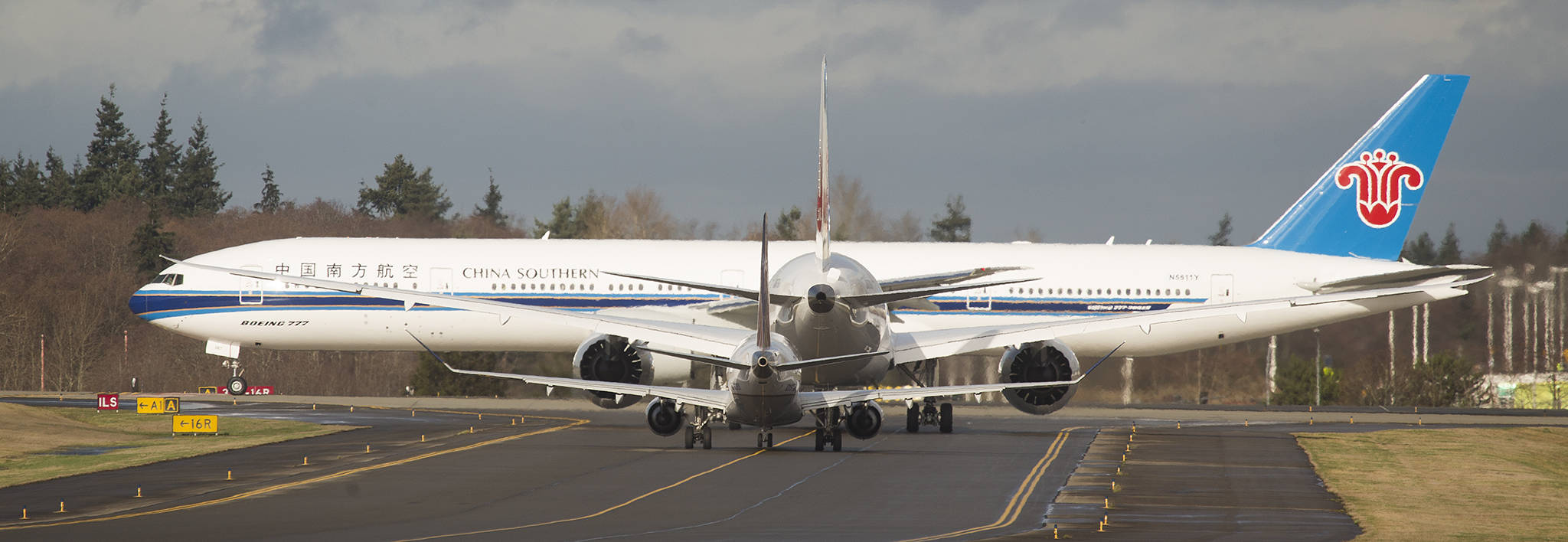EVERETT — The launch of the Boeing Co.’s much-anticipated New Midsize Airplane, the so-called NMA or 797, is on a slower track now while the company re-evaluates airline needs.
Chief Executive Officer David Calhoun, who took the reins Jan. 13 after former CEO Dennis Muilenberg was fired, said Wednesday that the company’s plan to rethink the NMA’s feasibility is “not intended to delay but refresh.”
“I’m just simply going to listen to customers and markets,” Calhoun said Wednesday on a conference call to discuss dismal financial results for 2019, in which Boeing booked its first loss since 1997. “It’s been over two years since we started that whole discussion. I’m going to refresh it every way I can think of, along with my new commercial airplane leader, and then we’ll get out with new news.”
Calhoun was expanding on comments he made about the NMA last week, when he said “things have changed a bit … The competitive playing field is a little different.”
Meanwhile, he said, he will mostly be focused on getting the grounded 737 Max back on track this year while others work on a business case for the next new airplane model — whatever that may be.
Talk of a new airplane model two years ago prompted Washington politicians and business leaders to begin lobbying for Boeing to build the NMA in this state. In 2018, Choose Washington NMA, a coalition of elected officials, businesses and unions created by Washington Gov. Jay Inslee, commissioned a report intended to help convince Boeing to build it here. It was widely believed that Boeing planned a big reveal at the 2019 Paris Air Show. But that expectation vanished after the Boeing 737 Max was involved in two deadly crashes, just five months apart, that killed 346 people. The Renton-built plane has been grounded since March.
So Choose Washington and others have shifted their focus from the 797 to broader promotion of the state’s aerospace sector.
As the 737 crisis deepened last year, aviation industry analysts began to speculate that Boeing might turn away from an NMA and focus instead on development of a single-aisle Future Small Aircraft, or FSA, which would replace the 737.
Calhoun on Wednesday dodged industry analysts’ attempts to pin down what might be next, or where in the product line the next new airplane would land. “We’ll take the time to reassess our product development strategy in a fairly methodical way,” he said.
The company was stingy about details, but the 797 was initially envisioned as a medium-sized aircraft smaller than a 787 but bigger than a 737. That market had been estimated to be worth roughly $1.5 trillion. Boeing at one time anticipated demand for 4,000 to 5,000 of such airplanes over the next 20 years.
Richard Aboulafia, a prominent aerospace analyst and vice president of the Teal Group of Fairfax, Virginia, has said the “middle segment — basically jets with 190 to 250 seats and 4,000- to 5,000-nautical-mile range,” about 1,500 miles more than the 737 Max, “is the only really healthy part of the market.”
But as Guy Norris, a senior editor for Aviation Week, wrote this week: “The overall rethink on NMA means that Boeing’s product development strategy is … more likely to pivot back to studies of a Future Small Aircraft (FSA), a new generation family covering the roughly 160-220 seat sector that targets the bulk of the current 737 market.”
Other analysts interpreted Calhoun’s comments about the changed landscape as a signal that Boeing might abandon plans for an NMA because the market has already been cornered by Airbus.
Aaron Hilsz-Lothian, writing for SamChui.com, an online aviation and travel website, said “the highly successful launch of the Airbus A321XLR, at the 2019 Paris Airshow, has resulted in too little market share left for Boeing to make the current ‘797’/NMA design worth it.”
Calhoun said Wednesday, “We’re in the airplane development business and we’re going to stay in the airplane development business. So we’re going to keep looking at what the next one needs to be.”
“I just want to get exactly the right airplane for the market that’s out there,” he said. “And I want to refresh our view as to what it is. The last two and a half years have been tumultuous. It has tested some of the, in my view, some of the edges of demand on all types of airplanes, and so we have to learn from that. But I will not hesitate to move forward on it.”
Janice Podsada; jpodsada@heraldnet.com; 425-339-3097; Twitter: JanicePods.
Talk to us
> Give us your news tips.
> Send us a letter to the editor.
> More Herald contact information.

























